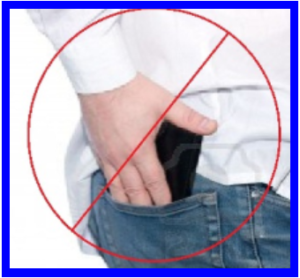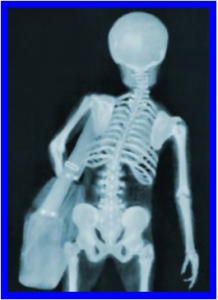Many people think about physical stress as a trauma (like a fall, accident, or injury) that can cause damage to the body, more specifically the nervous system. We know that injury and nerve system disturbances (subluxations) happen that way, but we often forget that seemingly small, repetitive motions done over time can have a tremendous impact on the function and development of our nerve systems, their ability to adapt and perform, and our ability to live the best life. Here are 3 things to make sure you and your loved ones are doing correctly:
The wallet in the back pocket:
Wh at happens when you are seated with a wallet in your back pocket? It raises one side of your pelvis creating an uneven sitting surface, resulting in compensation and misalignment of your entire pelvis, spine, and body. Think about the effects it can have if you do it every day for years and years. By moving your wallet to your front pocket, you keep your pelvis (the foundation of your spine) level, which helps keep your nervous system healthy.
at happens when you are seated with a wallet in your back pocket? It raises one side of your pelvis creating an uneven sitting surface, resulting in compensation and misalignment of your entire pelvis, spine, and body. Think about the effects it can have if you do it every day for years and years. By moving your wallet to your front pocket, you keep your pelvis (the foundation of your spine) level, which helps keep your nervous system healthy.
Purses: Reasons to mix it up and have several
The x  -ray speaks for itself. Carrying a heavy purse causes you to lean and compensate for the added weight on one shoulder. Keep it light! You don’t really need all that change at the bottom of your purse. Try a cross body purse, switch which side you wear you purse on from time to time, or try something smaller that you can carry in your hand.
-ray speaks for itself. Carrying a heavy purse causes you to lean and compensate for the added weight on one shoulder. Keep it light! You don’t really need all that change at the bottom of your purse. Try a cross body purse, switch which side you wear you purse on from time to time, or try something smaller that you can carry in your hand.
Backpacks: Keep them on the back (not the side)

~Did you know they make backpacks differently for each age group? The bottom of the pack should rest in the curve of the lower back with its lowest point no more than four inches below the child’s waistline. Be sure to choose the right size pack for your child’s back as well as one with enough room for necessary school items.
~School children should not carry more than 15% of his or her body weight.
~Load heaviest items closest to the child’s back (the back of the pack).
~Both shoulder straps should always be worn. Wearing a pack slung over one shoulder can cause a child to lean to one side, curving the spine and causing nerve interference, which could result in discomfort and health problems.
~Adjust the shoulder straps so that the pack fits snugly to the child’s back. A pack that hangs loosely from the back can pull the child backwards and strain muscles.
For High Schoolers and the College Bound: Get a hiking backpack. They have a waist belt and a chest strap that helps distribute the pack’s weight more evenly for those heavy books and infrequent trips to your locker. They are also long lasting and well worth the investment.
Not sure if you have a proper fitting backpack or if your purse is to heavy?
Bring them in to your next adjustment, and we will be happy to check them for you!

